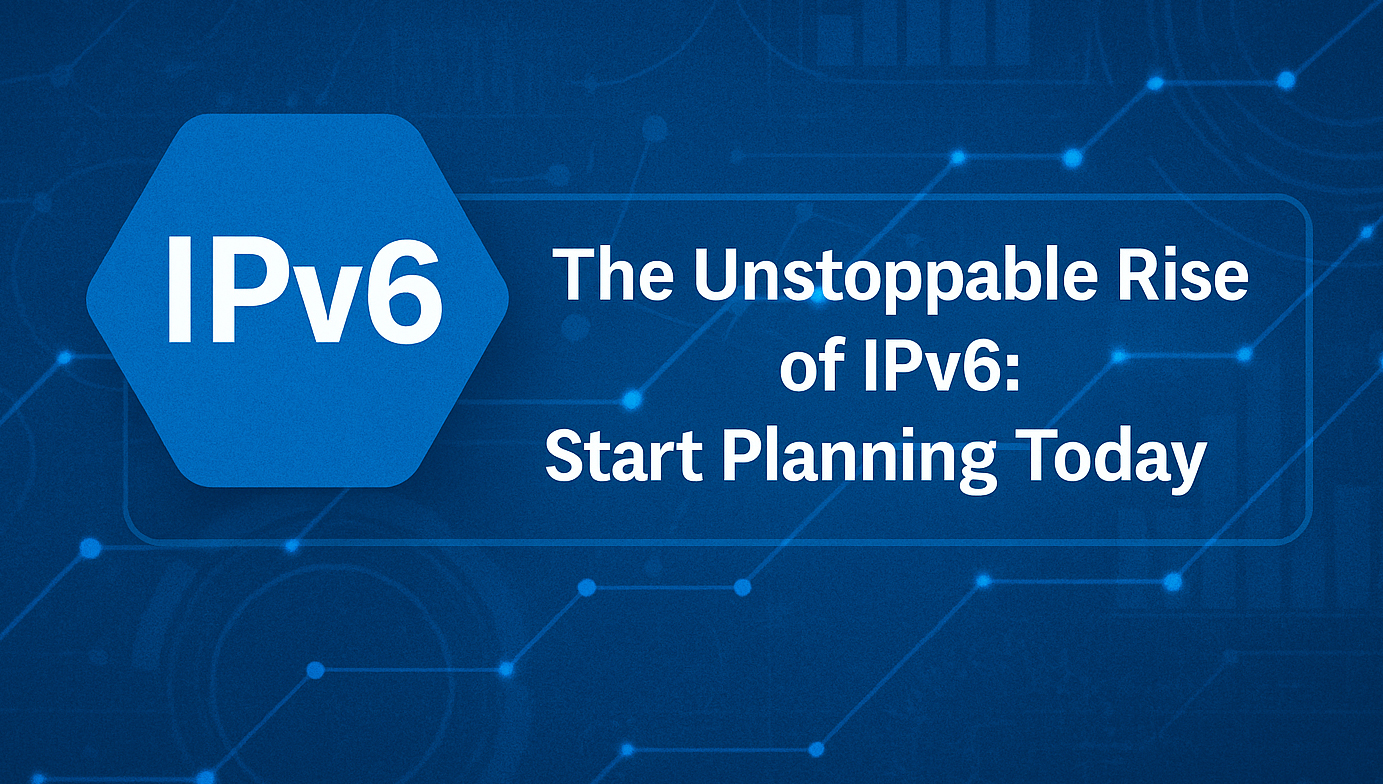 IPv6 Is Powering the Shift in the Digital Landscape
IPv6 Is Powering the Shift in the Digital Landscape
The internet is undergoing a quiet but monumental transformation. Beneath the apps we use and the services we depend on, a new foundation is being laid—one that will define how we connect for decades to come. IPv6 emerges as the modern successor to the legacy IPv4 protocol, addressing its scalability and functionality constraints. It is a foundational overhaul, not merely a routine update or stopgap measure. It’s a complete reinvention of how the internet assigns, tracks, and communicates between devices. For businesses, tech teams, and infrastructure architects, this shift is more than necessary—it’s overdue.
What Is IPv6 and Why Does It Matter?
IPv6 architecture, the successor to IPv4, introduces a 128-bit addressing scheme, enabling approximately 340 undecillion unique IP addresses—vastly surpassing IPv4’s 32-bit limit of 4.3 billion. This scalability is essential for supporting the exponential growth of connected devices. In addition to address expansion, IPv6 enhances network efficiency through hierarchical routing, streamlined header structures, and native support for IPsec, laying the groundwork for more secure and efficient data transmission.
The Exhaustion of IPv4: A Ticking Clock
IPv4 address exhaustion is a pressing reality. Global allocations have been depleted, forcing reliance on workarounds like NAT, which hinder performance and scalability. As modern applications—especially in cloud and peer-to-peer environments—demand direct connectivity, IPv4’s limitations are becoming critical. The transition to IPv6 is no longer optional—it’s urgent.
Breaking Down the Benefits of IPv6
IPv6 architecture is a strategic upgrade, not a temporary fix. It improves routing efficiency through hierarchical addressing and streamlined headers, supports autoconfiguration for seamless network access, and integrates IPsec for enhanced security. Its vast address space eliminates the need for NAT, enabling true end-to-end connectivity essential for modern applications and real-time communication.
IPv6 vs IPv4: The Critical Differences Explained
IPv6 architecture fundamentally differs from IPv4 by expanding addresses from 32 to 128 bits, enabling vastly greater scalability. It eliminates NAT, simplifies packet headers for faster routing, and uses multicast over broadcast to boost efficiency. These enhancements aren’t just upgrades—they’re structural advancements for a hyper-connected future.
Global Adoption: Who’s Already Embracing IPv6 architecture?
Countries like the U.S., Germany, India, and Japan are leading IPv6 architecture adoption, with major ISPs and mobile networks assigning IPv6 by default. Tech giants such as Google, Facebook, and Microsoft have fully integrated IPv6, signaling a global shift. This is no longer experimental—it’s essential, and those who delay risk falling behind.
The Business Impact of IPv6: Risks of Lagging Behind
IPv6 adoption carries significant implications for businesses. Delays can result in reduced accessibility on IPv6-only networks, degraded performance for modern users, and compatibility challenges with international partners. Maintaining IPv4 infrastructure also drives up costs due to address scarcity and reliance on complex NAT configurations. By adopting IPv6 early, organizations enhance scalability, operational efficiency, and long-term digital resilience.
Preparing Your Infrastructure for IPv6 Migration
IPv6 migration is a phased process, not an instant transition. It begins with auditing current hardware, software, and service providers for IPv6 compatibility. Network components must support dual-stack configurations, and DNS systems need to accommodate AAAA records. Testing environments should replicate real-world traffic to validate functionality and security. Equally important is training IT teams to manage and maintain the new protocol effectively.
IPv6 Migration Challenges & Solutions
Transitioning to IPv6 involves notable challenges. Dual-stack configurations can introduce inconsistencies, while legacy hardware and outdated software may lack IPv6 support. Security concerns and incompatible firewalls further complicate deployment. A phased strategy is essential—beginning with core infrastructure updates, prioritizing critical services, and securing vendor support. Controlled testing environments help fine-tune implementation while minimizing operational risk.
Security in an IPv6 World: What’s Changing?
IPv6 includes native IPsec support, enhancing security through built-in encryption. However, its architecture introduces new risks—removing NAT increases device visibility, and misconfigured firewalls can expose systems. To mitigate these threats, organizations must update security policies, harden endpoints, and tailor firewall rules to IPv6 traffic.
The Role of IPv6 in IoT Growth
IPv6 is essential for the future of IoT. With billions of connected devices, IPv4’s limited address space falls short. IPv6 enables direct, secure communication at scale—eliminating NAT complexity—making it critical for smart cities, autonomous systems, remote healthcare, and advanced manufacturing.
Planning for IPv6 Deployment
Future-proofing your network requires a strategic IPv6 transition plan. Start with a gap analysis, prioritize upgrades for internet-facing services, and coordinate with ISPs and vendors for full support. Use dual-stack testing to track progress, and keep stakeholders engaged. More than a task, IPv6 is a chance to modernize your infrastructure.
Conclusion: There’s No Turning Back
IPv6 is no longer a speculative upgrade—it is the new standard. As digital ecosystems expand, IPv4’s constraints will become bottlenecks. Organizations that delay action will find themselves struggling to stay connected in a world that’s moving on. The path to IPv6 readiness may require investment, planning, and persistence—but the rewards are undeniable. The digital future is rapidly emerging—and it is built on IPv6.
Stay updated! Follow us on social media! Facebook, Twitter, LinkedIn
Check out our newest blog entry ( Why IT Teams Are Moving to AIOps)
Subscribe to get free blog content to your Inbox [email-subscribers-form id=”1″]




